Medical parts were written by Dr. Rai
Modern lifestyles have been so much fun with fast cultures and quick results. We live more actively on online platforms and feel lonely when alone. We stress out on every small thing, unlike the older generations who could fix things with a cool head. Stress and physical health concerns have been a part of our lives, and they aren’t sugar and spice. Yoga has been an answer for more than centuries for physical flexibility, emotional well-being, and stress-related issues in India. Around 90 percent of doctor visits could be linked to stress-related problems, according to this article. Therefore it is time to find out whether Yoga for stress helps, keep reading.
Interestingly, a small percentage of doctors also recommend Yoga as a practice that could help bring positive lifestyle changes. Let us explore how and why Yoga can be helpful when dealing with stress. If you are interested in having the opinion of a clinical psychologist, keep reading.
Stress and its Symptoms
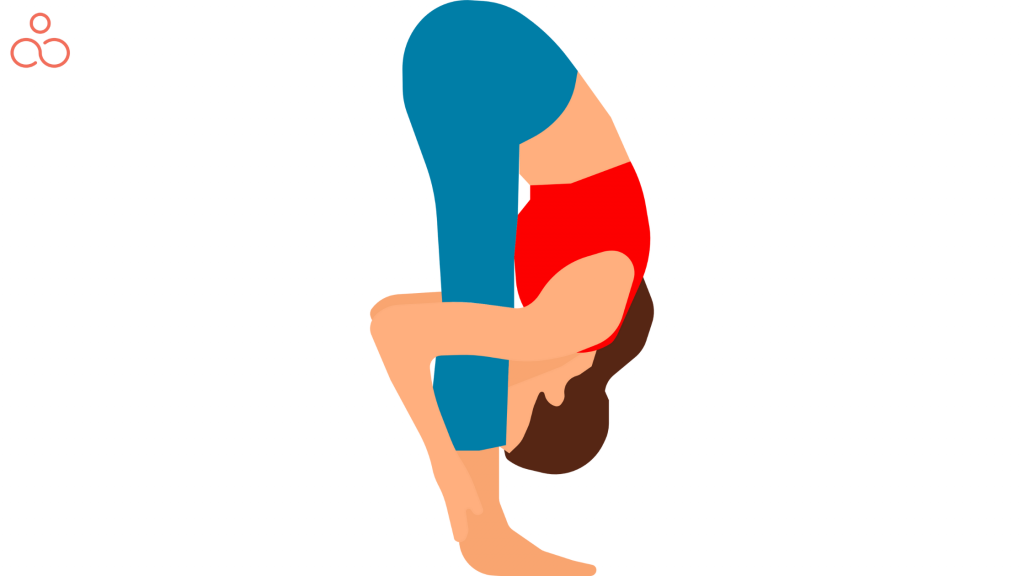
Most of us usually prefer not to disclose or even agree that we are feeling stressed. Stress is a silent killer, and it works in ways hard to understand. Though the level of stress might vary from mild to chronic, no one is an exception to it, right from kids to older folks. Psychological stress is a significant factor in depression and neurological issues, e.g., nerve disorders. It is quite difficult to list down the symptoms of stress as they vary from person to person. The kind of stress a kid experiences while performing on a stage is much different from the stress one undergoes after a traumatic life incident or after losing a loved one.
Some common physical, emotional, and behavioral symptoms are listed below.
Physical Symptoms
- Clenching your fists or jaws
- Tightness in the shoulders
- Difficulty to sleep
- Tiredness or exhaustion
- Frequent digestive problems
- Trouble having sex
- Body aches or cramping
- Feeling a racing heart
- Weight management issues
Emotional Symptoms
- Feeling lonely and sad
- Easily irritated
- Irritation towards almost everything
- Panic attacks
- Feeling drained
- Lack of focus or difficulty to concentrate
Behavioral Symptoms
When in chronic stress, we tend to overdo our natural or routine activities. Binge eating, excessive smoking or drinking, addiction to drugs, an obsession with sexual activities, compulsive shopping, etc., are a few behavioral symptoms in individuals with substantial stress impacts. Keeping an eye on these patterns is necessary as they could be the behavioral symptoms commonly ignored or go unnoticed.
Yoga to Rescue
We can simply define stress as physical and mental reactions to the situations we undergo. We cannot avoid a physiological event but can manage it to reduce the consequences and troubles it brings along. A normal physiological reaction could turn into a stressful event, commonly referred to as the fight-or-flight response, when Cortisol (the stress hormone) levels fluctuate. Chronic stress leads to accelerated biological aging, oxidative stress (plays a role in the aging process and occurs naturally in the body), and chronic low-grade inflammation. Oxidative stress creates an imbalance between the antioxidants and free radicals (oxygen-containing molecules that could easily react with other molecules and create a large chain of chemical reactions) in your body, resulting in DNA damage. “Oxidative Medicine and Cellular Longevity” published a study on individuals who have practiced 90 minutes of Yoga for 12 weeks (5 days a week) as a combination of asanas, Pranayama, and meditation and have displayed slower cellular aging, lower levels of inflammation, and reduced effects of depression and stress on the body.
Yoga is a centuries-old, ancient art of developing yourself. It is different from other forms of exercise because it involves ethical behavior towards yourself and others. Yoga trains the nervous system to cope with stress while bringing in a balance at the physical and emotional levels. Yoga teachers and practitioners can cope better with stress and are happy and more content than most. When it comes to managing stress, most of the Yoga styles are beneficial. Still, I would personally recommend going for Hatha Yoga or Restorative Yin Yoga.
The asanas add a pinch of meditation and practice Pranayama (breathing in rhythmic patterns) for greater well-being. In Yogic and Ayurvedic approaches, both the mind and the body are very much connected. The body chemistry varies according to your moods. Likewise, your life quality depends on the thoughts you carry, experience, or hold.
Benefits of Yoga
- Yoga can help you reduce the Cortisol levels in your body, which indirectly helps you manage and reduce your stress.
- Bringing in a balance in your body and mind through Postures (better known as asanas), Systematic breathing (Pranayama), and meditation might help you fight against sleep disorders.
- Studies have shown that Yoga could be supportive in decreasing your stress as well as anxiety.
- Yoga activates the parasympathetic nervous system (counter stress response) in the spine and can result in you having a healthier back and puts your aches and pains in control. Did you know that around 16 million Americans experience chronic back pain, resulting in day-to-day restrictions, really stressful.
- This article shows that Yoga increases self-compassion and positivity.
- Yoga might be used as a complementary therapy if you are trying to quit smoking. A study on 55 women undergoing 8-week group-based cognitive behavioral therapy for smoking cessation was also put through a twice-a-week Vinyasa Yoga and found positive results.
- It increases body flexibility and lowers the heart rate.
- Yoga is beneficial for respiratory functions and helps you to keep problems like Asthma in check.
Setbacks of Yoga
Yoga needs to be practiced consistently to achieve the desired results. It could be challenging to learn Yoga from books as you might be holding the postures incorrectly, and it is essential to learn from a teacher, which could be pricey. Learning the Poses from Video tutorials online is comparatively better. Still, I would recommend using these online tutorials for a revision than learning them as a beginner.
Simple Yoga Asanas for Stress
Suppose you are someone with uncontrolled blood pressure, severe osteoporosis, risk of clots, pregnancy, etc. In that case, you might have to refrain from holding specific postures. This list of some simple and basic asanas that help you manage stress is listed here in this section. Still, we strongly recommend you consult your doctor about your state of health before experimenting with new forms of exercise.
- Sukhasana or Easy Pose – A pose where you sit cross-legged with your back straight helps you improve your body posture and relax the mind.
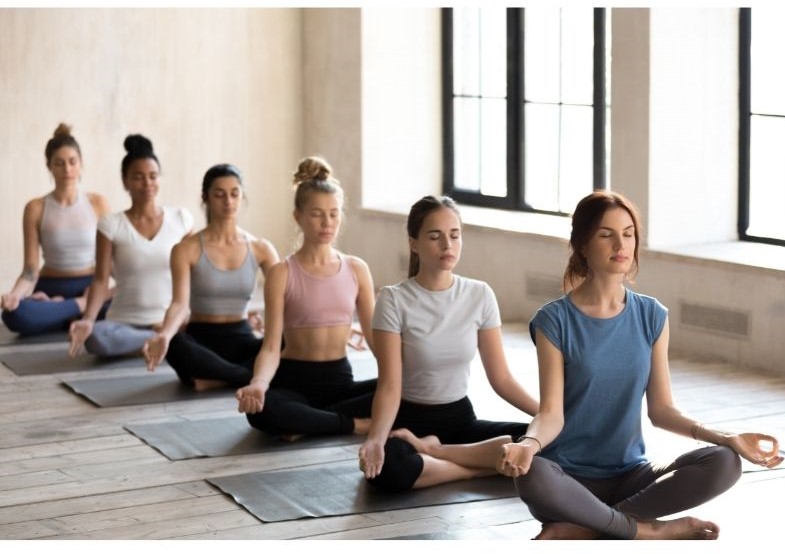
- Marjaryasana or Cat Pose – Kneel on your fours and place your hands and knees under your shoulders and hips, respectively. Arch your back up, let the head fall between your shoulders, and hold. Try to touch the upper chest with your chin, but do not force it if you are a beginner. This stretch helps you to strengthen your back and release the tension in your upper back and neck.

- Bitilasana or Cow Pose – Kneel on your fours and place your hands and knees under your shoulders and hips. Roll your tummy down, trying to create a dip in the back, and lookup. This stretch helps to create an emotional balance, strengthens the spine, and reduces stress.
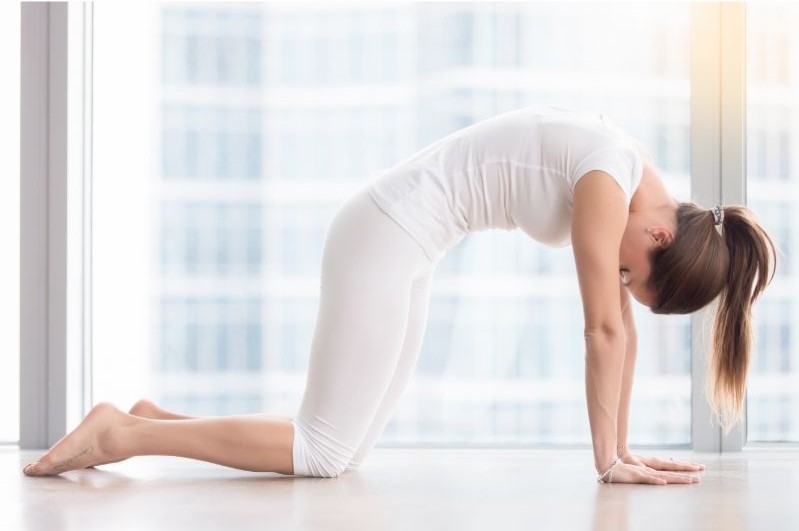
- Balasana or Child’s Pose – Kneel and sit on your heels. Bend forward to touch the ground with your forehead and rest the chest on the thighs. It is a counter asana and helps stretch the spine, thighs, hips, and ankles. It relaxes the brain and relieves stress and fatigue.
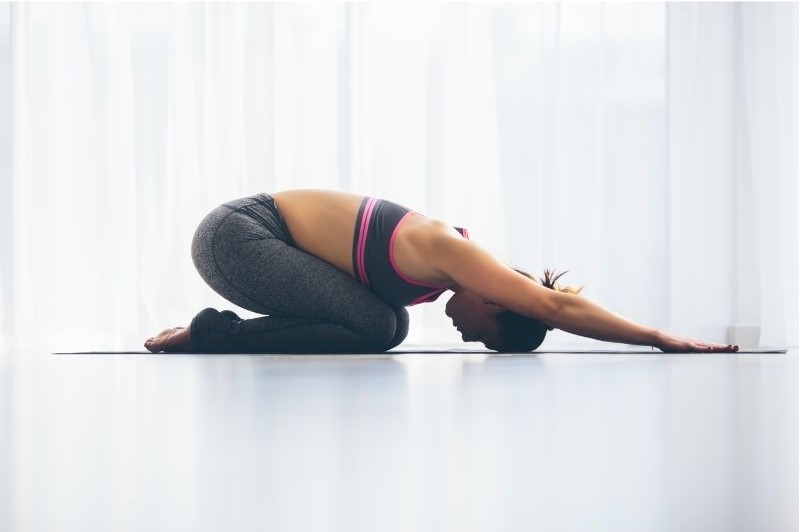
- Bhujangasana or Cobra Pose – Lie down on your belly and bend back to create a stretch in your spine. This asana helps tone your spinal nerves and improves kidney and liver functions.
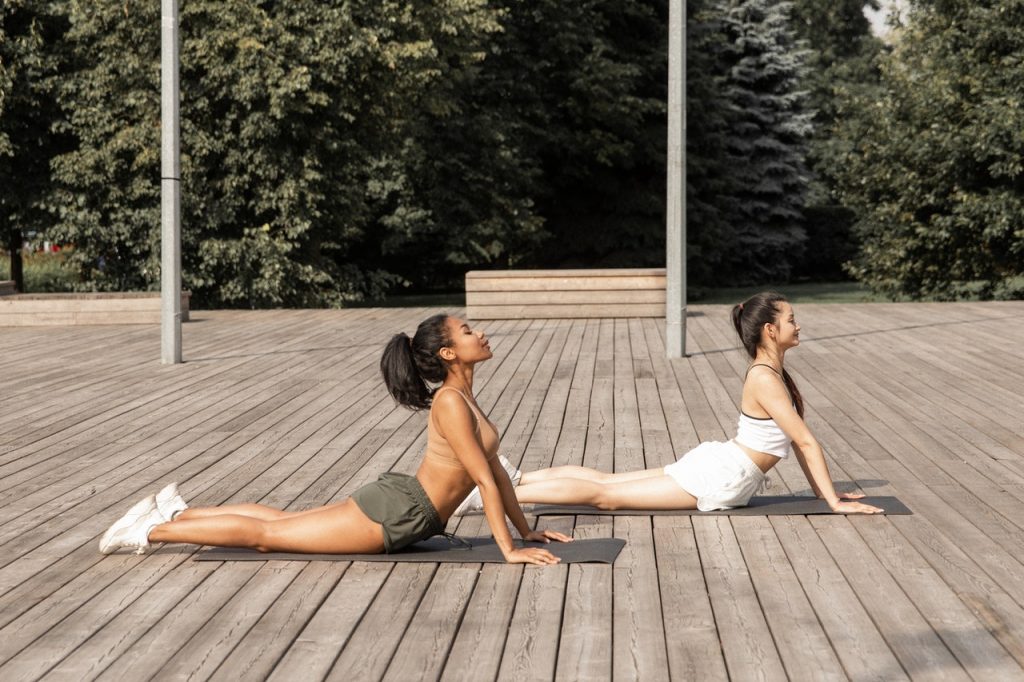
- Uttanasana or Standing Forward Bend – The standing forward bend pose to reach the ground has many variations to it. As a beginner, you can simply try to bend your back without bending your knees and try to reach the ground. It helps relieve stress in the spine, neck, and back and reduces anxiety, depression, and fatigue. It activates abdominal muscles and helps feel the stretch throughout the body.
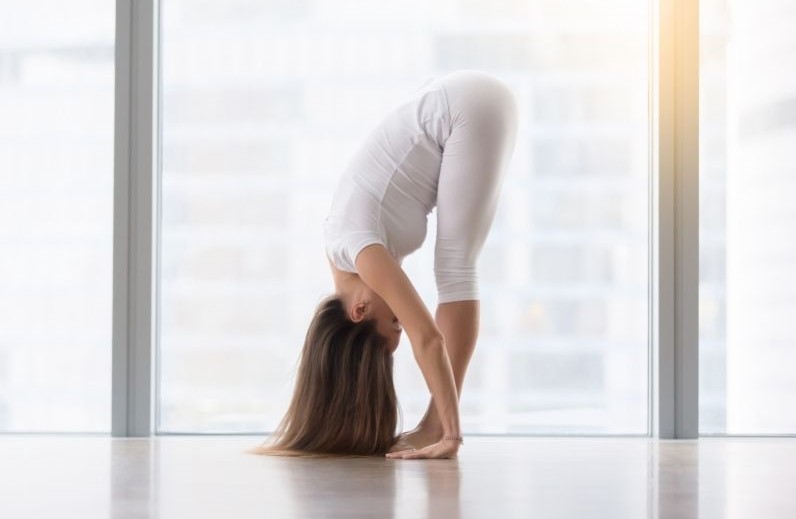
- Tadasana or Mountain Pose – It is the basic standing asana. You start with your feet together and slowly lift the thighs, waist, and crown with an elongated spine. It helps improve posture and gain a better balance.
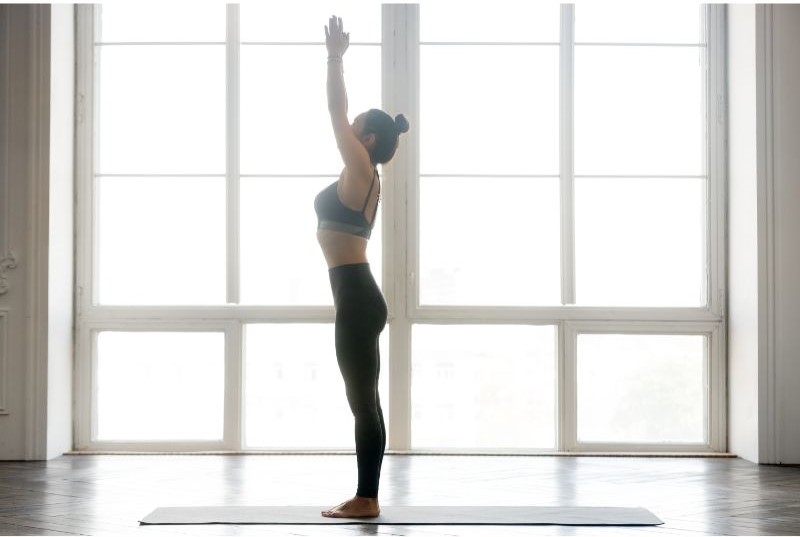
- Shavasana or Corpse Pose – Lay flat on your back, with palms facing upwards, and close your eyes to consciously thank all your body parts. Try to release the tension by focusing on every part of your body and make it a point to practice the Corpse pose after every Yoga session or before sleeping. It is incredibly relaxing. Do check out the wonders of Corpse Pose in detail?
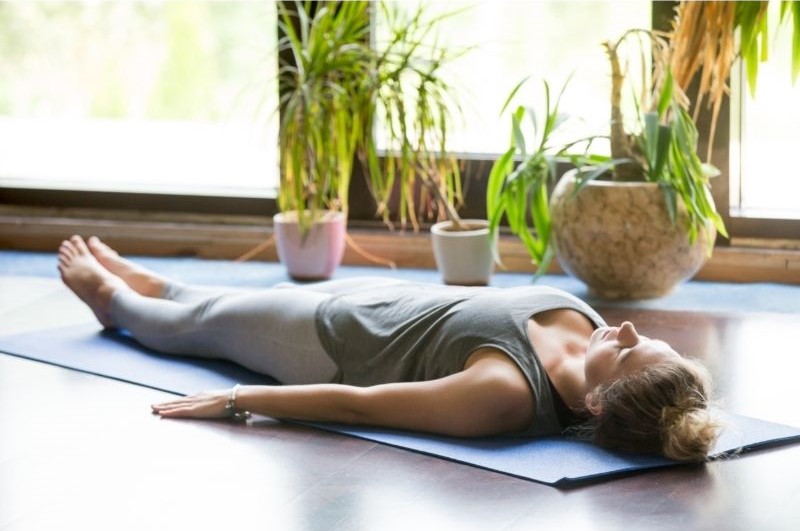
In addition to these Yoga asanas, try incorporating systematic breathing techniques like Pranayama and meditation as a daily routine to help soothe your mind and body. Remember that Yoga can be used as an exercise to reduce stress in the long run but is not a treatment. Always talk to your doctor or a psychologist for help.
Conclusion
In addition to these Yoga asanas, try incorporating the systematic breathing techniques like Pranayama and meditation as a daily routine to help soothe your mind and body. Remember that Yoga can be used as a complementary therapy to reduce stress in the long run but is not a treatment. Always talk to your doctor or a psychologist for help.

